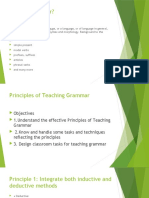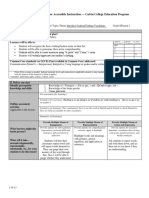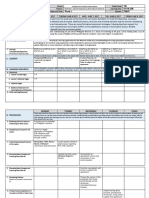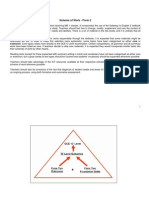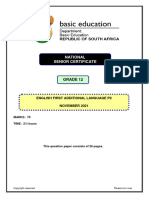0 ratings0% found this document useful (0 votes)
4 viewsGeneral Functio Wps Office
General Functio Wps Office
Uploaded by
janellepura20Copyright:
© All Rights Reserved
Available Formats
Download as DOCX, PDF, TXT or read online from Scribd
General Functio Wps Office
General Functio Wps Office
Uploaded by
janellepura200 ratings0% found this document useful (0 votes)
4 views3 pagesCopyright
© © All Rights Reserved
Available Formats
DOCX, PDF, TXT or read online from Scribd
Share this document
Did you find this document useful?
Is this content inappropriate?
Copyright:
© All Rights Reserved
Available Formats
Download as DOCX, PDF, TXT or read online from Scribd
Download as docx, pdf, or txt
0 ratings0% found this document useful (0 votes)
4 views3 pagesGeneral Functio Wps Office
General Functio Wps Office
Uploaded by
janellepura20Copyright:
© All Rights Reserved
Available Formats
Download as DOCX, PDF, TXT or read online from Scribd
Download as docx, pdf, or txt
You are on page 1of 3
GENERAL FUNCTION ERROR CORRECTION VS WRITTEN GRAMMAR–
FEEDBACK Refers to the grammatical
a. To Name rules and conventions
1. Noun MISTAKE – mistakes they used in the written
2. Pronoun can correct themselves. language.
b. To Describe ERROR – mistakes which
1. Adjective students can not correct – Often requires greater
2. Adverb themselves and therefore attention to details and
c. To Connect need an explanation. clarity.
1. Conjunction –
FANBOYS Positive feedback – GRAMMATICALIZATION –
2. Preposition – in, on confirms a student’s Involves Reduction and
d. To show action, strong response correctness. Increased dependency
feelings/state of being Negative Feedback (error a. Phonetic Erosion –focus
1. Verb correction) – corrects the about the sounds of words
2. Interjection faulty language behavior changing overtime.
GRAMMAR of students.
INDIRECT/IMPILICIT Example: Going to –
• Set of rules that explains Gonna
how words are used in a STRATEGIES
language through both 1. Recast Student: DEMONSTRATIVE : I saw
writing and speaking Yesterday I go shopping. that, he went there.
FOUR (4) TYPES OF
Teacher: Oh yesterday I COMPLIMENTARY : I saw
GRAMMAR
also went shopping. that he went there.
1. Functional Grammar –
used for oral and written 2. Clarification: Excuse b. Phonological Reduction
social function. me? – focus about structure of
2. Descriptive Grammar– a word or phrase
DIRECT/EXPLICIT
layout the grammatical
STRATEGIES METHODS OF TEACHING
elements and rules of a
language as it is usually 1. Correct answer GRAMMAR
used. feedback 1. Diagramming Sentences
- Visualizing how to fit
3. Prescriptive Grammar – 2. Guided feedback – together the different
set of rules about elicitation technique. parts of a sentence.
language based on how BASIC RULES:
people think language GRAMMAR – systems of
should be. rules consisting the 1. Identify the sentence
phonology, semantics, and elements.
4. Pedagogical Grammar – pragmatics.
a description of how to 2. Place the subject, verb,
use the grammar of a Lasser Freeman (2001) – and direct object together
language to communicate, Grammar should be seen then underlinethem.
for people wanting to as skill than purely
competence. 3. Separate the subject
learn the target language.
GRAMMARING - Fifth skill from the verb w/ a vertical
Jeffey Gitomer – your of macro skill (Lasser- line that crosses the
grammar is a reflection of Freeman) underline.
your images. Good or bad
- Process of applying 4. Separate the direct
you have made
grammatical rules object from verb w/ a
impression. And like all
SPOKEN GRAMMAR– vertical line that does not
impressions, you are in
refers to the grammatical cross the underline.
control.
rules and conventions 5. Keep adjectives and
Becoming simpler. used in spoken language.– articles with noun they
Often more informal and modify and place them on
Example: because – cuz
allows for greater separate diagonal lines
Okay – ok
flexibility. touching the word they
modify. issues in teaching Professional
2. Inductive- retention of grammar Development- providing
grammar concepts, with workshops and resources
teachers using techniques 1. Balancing form and for teachers to improve
that are known to word function their grammar instruction
cognitively and make an -right balance between techniques
impression on students' teaching the form (rules MODES OF TEACHING
contextual memory. and structures) of GRAMMAR
Deductive- focuses on grammar and the function Linguistic mode- help
instruction before practice (how grammar is used in students learn and
communication). understand the rules,
4.Interactive teaching 2. Scaffolding Learning structures, and functions
- incorporating some - progressing from simple of language.
games and engaging to complex grammar 1. Auditory mode –
activities. concepts strategies include listening
to spoken language
5. Functional-notional 3. Handling Learner Errors 2. Visual Mode –
approach- often choose a -Addressing learner errors strategies include using
real-world situation as effectively without charts, diagrams,
their "notion," and choose discouraging students infographics, and written
corresponding functions from using the language. example.
to teach to prepare 4. Teaching Grammar in 3. Tactile/Kinesthetic
students to communicate context- integrating Mode – learning through
in that situation in the grammar lessons into physical engagement and
lesson meaningful contexts to hands-on-activities.
make learning more Ex. Using body movement
7. Situational context- engaging and relevant to demonstrate word
general knowledge that a
4. Verbal mode – learning
person has of the world. 5. Differentiated
through discussion,
Instruction
8. Using texts, stories, explanation, and verbal
6. Motivating students
songs and rhymes- Gap sentence translation.
fills or close texts, Focus 7. Formative vs ex. Group discussion,
questions, True-false Summative Assessment - debates
statements, Put these formative assessment (to
5. Interactive Mode –
lines into the correct monitor progress) and
encourages learners to
sequence, Dictation, Add a summative assessment (to
actively engage with
final verse, Circle the evaluate overall
others to practice and
antonyms/synonyms of understanding)
apply grammar.
the given words, Discuss 8. Technology Integration
9. Cultural Sensitivity- use Ex. Group activities, role
9. PPP appropriate words for play
Presentation- building a each students.
10.Incorporating 6. Written Mode –
situation that requires a
Authentic Materials- use learning through written
natural and logical use of a
of songs, poems and materials, exercises, and
new language. Practice-
newspaper to teach text-based learning. Ex.
testing the procedure so
grammar Journaling, grammar
students can be familiar
11. Teaching worksheets
with the language.
Metaawareness- ability to 7. Comparative Mode –
Production-"learners" to
reflect on and analyze involves comparing
becoming "users" of the
language. (Compare grammar of the target
language. (Application)
sentence structure in their language to the learners
PEDAGOGICAL ISSUES IN native language to the native language
TEACHING GRAMMAR- target language)
12. Teacher Training and
Ex. Pointing out 7. Dialogue practice-
similarities and differences integrate dialogues and
conversations between
8. Contextual Mode – characters in the story
through context and real- 8. Grammar Focus- choose
world situation specific grammar points to
Ex. Using authentic emphasize in the story
materials like text, news 9. Creative expression-
article encourage students to
9. Mnemonic – memory create their own stories
auds and mnemonic using the grammar they
devices to remember have learned
grammar rules.
10. Problem Solving Mode
–through solving puzzles
and grammatical
challenges.
Story Reading Mode –
story as a vehicle for
teaching grammar rules
and concepts.
HOW STORYTELLING
MODE CAN BE EFFECTIVE
USED TO TEACH
GRAMMAR
1. Contextual learning-
provide meaningful
context in which grammar
structures naturally occur.
2. Engagement- motivates
students to actively
participate
3. Immerse learning-
students are more likely to
absorb grammar
structures subconsciously
4. Visualization-
encourages mental
imagery, which can help
students visualize the
context and meaning of
grammar rules
5. Repetition and
Reinforcement- repeated
exposure to target
grammar points helps
solidify
understanding(reinforce
learning)
6. Interactive elements-
ask questions, pause for
responses, and involve
students in discussions
related to the narrative
You might also like
- Slavery Paper 1 Specimen Response With CommentsDocument3 pagesSlavery Paper 1 Specimen Response With CommentsCOVERSBYELI80% (5)
- Module 1 English 110 Teaching and Assessment of GrammarDocument12 pagesModule 1 English 110 Teaching and Assessment of GrammarMarianne Adarayan Cabarles96% (26)
- Spoken English in 10 DaysDocument20 pagesSpoken English in 10 DaysD R Voyage100% (1)
- Ef4e Adv Plus Wordlist PLDocument14 pagesEf4e Adv Plus Wordlist PLPaulina0% (1)
- Methods of Teaching 1. Methodological Classification of English Sounds. Ways of Introducing New SoundsDocument28 pagesMethods of Teaching 1. Methodological Classification of English Sounds. Ways of Introducing New SoundsExclusive Evgesha100% (1)
- Reviewer in Teaching Communicative GrammarDocument4 pagesReviewer in Teaching Communicative GrammarPrincessIUGandaXDVINo ratings yet
- El 108 Teaching GrammarDocument2 pagesEl 108 Teaching GrammarRazyl EdioNo ratings yet
- Teaching and Assessment of Grammar Syllabus Wit ModulesDocument25 pagesTeaching and Assessment of Grammar Syllabus Wit ModulesShaira Mae AlimpolosNo ratings yet
- Elt03 PrelimDocument3 pagesElt03 PrelimHamprey SoteloNo ratings yet
- 60. Language focus 5 + Grammar in focus.Document1 page60. Language focus 5 + Grammar in focus.josanacaka052No ratings yet
- Bsee29 ReviewerDocument8 pagesBsee29 ReviewerzelevboivelezNo ratings yet
- Lecture 8Document8 pagesLecture 8x9tbqprr9rNo ratings yet
- LLGDNNDocument5 pagesLLGDNNngocNo ratings yet
- Grammar-Translation MethodDocument3 pagesGrammar-Translation MethodThanh PhạmNo ratings yet
- Methods of Grammar TeachingDocument4 pagesMethods of Grammar TeachingJoy Ann Mendoza100% (1)
- Grammar ReviewerDocument2 pagesGrammar ReviewerAaliyah Nacinopa NomaNo ratings yet
- Teaching and Assessment of GrammarDocument5 pagesTeaching and Assessment of GrammarRose100% (2)
- Assessing Grammar and VocabularyDocument36 pagesAssessing Grammar and VocabularySebastián IncaNo ratings yet
- EL 109 Chap 2Document25 pagesEL 109 Chap 2laurafoster613No ratings yet
- Unit 1Document3 pagesUnit 1Blake GaozuNo ratings yet
- Principles of Teaching GrammarDocument14 pagesPrinciples of Teaching GrammarXuân VũNo ratings yet
- Lesson 1 Fashion IntroduceDocument4 pagesLesson 1 Fashion Introduceapi-434051929No ratings yet
- Wa0001.Document9 pagesWa0001.sktheo7No ratings yet
- Methods of Teaching Grammar - CompilationDocument8 pagesMethods of Teaching Grammar - CompilationUrsua KlinelleNo ratings yet
- Eng 8 LP4Document8 pagesEng 8 LP4Antonette Gilboy CabrillasNo ratings yet
- Máster Formación del Profesorado - Udima (EFL II Unit 1-5)Document22 pagesMáster Formación del Profesorado - Udima (EFL II Unit 1-5)hrmenarguesNo ratings yet
- Types of Syllabus - DuongDocument17 pagesTypes of Syllabus - DuongbaongocNo ratings yet
- EL108-Final-Exam-Reviewer-All-Coverages-1 (1)Document19 pagesEL108-Final-Exam-Reviewer-All-Coverages-1 (1)Alexamiles BrionesNo ratings yet
- TSLB3083 NotesDocument24 pagesTSLB3083 NotesTESLSK0620 Nur Hazrinah Binti MusiniNo ratings yet
- English Teaching MethodsDocument11 pagesEnglish Teaching MethodsMaria BolonkinaNo ratings yet
- Lecture Note - GrammarDocument4 pagesLecture Note - Grammar227140231007No ratings yet
- Written Report MFTG G6Document11 pagesWritten Report MFTG G6jmr.reposarNo ratings yet
- Basic Theoreotical Material of The LecturesDocument25 pagesBasic Theoreotical Material of The LecturesРостислав СалоNo ratings yet
- Lecture 9. Teaching Grammar PDFDocument15 pagesLecture 9. Teaching Grammar PDFaaaidaaanaaa0055No ratings yet
- Bsee 29 ReviewerDocument4 pagesBsee 29 Reviewerzpvt4r4pntNo ratings yet
- ENG7-Wk 2Document2 pagesENG7-Wk 2Thelma R. VillanuevaNo ratings yet
- Approaches and Methods of English Language Teaching in One LookDocument7 pagesApproaches and Methods of English Language Teaching in One LookNina LynNo ratings yet
- Session #4Document13 pagesSession #4Javier AcevedoNo ratings yet
- Methods of Teaching Grammar. Types of Grammatical Skills: St. Petersburg State University of CultureDocument11 pagesMethods of Teaching Grammar. Types of Grammatical Skills: St. Petersburg State University of CultureTania LpzNo ratings yet
- Methods of Teaching Grammar. Types of Grammatical Skills: St. Petersburg State University of CultureDocument11 pagesMethods of Teaching Grammar. Types of Grammatical Skills: St. Petersburg State University of Culture가르리예바마랄라No ratings yet
- Eng 7 DLL 3Q 8WDocument4 pagesEng 7 DLL 3Q 8WHarlequin ManucumNo ratings yet
- Methods & approaches summary chart - 3rd BDocument22 pagesMethods & approaches summary chart - 3rd BcamilaNo ratings yet
- Module 1-Leson 3-Teaching GrammarDocument37 pagesModule 1-Leson 3-Teaching GrammarxuandaoNo ratings yet
- WEEK 2 Approaches in The Teaching of GrammarDocument26 pagesWEEK 2 Approaches in The Teaching of GrammarKee Li LiNo ratings yet
- Nindah Nurul Fahqanuri Putri - Summarize Group 7Document6 pagesNindah Nurul Fahqanuri Putri - Summarize Group 7oneofnin200803No ratings yet
- TK1 - 5 Teaching Methods - Group 7Document8 pagesTK1 - 5 Teaching Methods - Group 7linhcttlNo ratings yet
- TIẾT 75-UNIT 8- LANGUAGEDocument4 pagesTIẾT 75-UNIT 8- LANGUAGENhi HoàngNo ratings yet
- Lesson Plan: Group 4 Form: Subject-Verb Agreement: Main Aims Sub AimsDocument5 pagesLesson Plan: Group 4 Form: Subject-Verb Agreement: Main Aims Sub AimsQurratUlAinRazaNo ratings yet
- GRADES 1 To 12 Daily Lesson Log VII English Week 1 FirstDocument4 pagesGRADES 1 To 12 Daily Lesson Log VII English Week 1 FirstNoel DELOS AngelesNo ratings yet
- Teaching Speaking and Writing SkillsDocument34 pagesTeaching Speaking and Writing SkillsVen KeraNo ratings yet
- Project PAREDocument7 pagesProject PARErufinoarlyn120No ratings yet
- Scheme of Work - Form 2Document15 pagesScheme of Work - Form 2Dato Edzuan Hj SuparioNo ratings yet
- ĐỀ CƯƠNG ÔN TẬP PHƯƠNG PHÁP DẠY HỌC TIẾNG ANH 1Document9 pagesĐỀ CƯƠNG ÔN TẬP PHƯƠNG PHÁP DẠY HỌC TIẾNG ANH 1chtphuong.2005No ratings yet
- Grammar Success 1 Tips IdeasDocument44 pagesGrammar Success 1 Tips Ideaschayadawin2340No ratings yet
- Rini Dwi Septiyani - Bahan AjarDocument5 pagesRini Dwi Septiyani - Bahan AjarMuhammad Furqon WijayaNo ratings yet
- Activity 5 - TESLDocument2 pagesActivity 5 - TESLkathrinaNo ratings yet
- Communicative ApproachDocument2 pagesCommunicative ApproachJohn LawrenceNo ratings yet
- Chapter 1 - Teaching and Assessment of GrammarDocument3 pagesChapter 1 - Teaching and Assessment of GrammarFaisal Daunotan100% (1)
- Task-based grammar teaching of English: Where cognitive grammar and task-based language teaching meetFrom EverandTask-based grammar teaching of English: Where cognitive grammar and task-based language teaching meetRating: 3.5 out of 5 stars3.5/5 (4)
- Final Eng 4Document2 pagesFinal Eng 4Arianne OlaeraNo ratings yet
- ApproximantsDocument4 pagesApproximantsLuciana Carolina GuillemNo ratings yet
- English FAL P2 Nov 2021Document26 pagesEnglish FAL P2 Nov 2021Petro Susan BarnardNo ratings yet
- SAT PunctuationDocument18 pagesSAT PunctuationTom BarhanNo ratings yet
- (PDF) Nicholas Wade - Phonetic Clues Hint Language Is Africa-BornDocument10 pages(PDF) Nicholas Wade - Phonetic Clues Hint Language Is Africa-BornMouthissimoNo ratings yet
- 3 General English&legal Language-Law, Sem-1 SyllabusDocument1 page3 General English&legal Language-Law, Sem-1 Syllabussreeram saipranithaNo ratings yet
- The Fall of The House of UsherDocument28 pagesThe Fall of The House of Usherwewabmember100% (1)
- Semi Detailed Lesson Format BEEd 1Document2 pagesSemi Detailed Lesson Format BEEd 1Kristine BuenaventuraNo ratings yet
- Workshop 1 - Customer Service - Personal InformationDocument7 pagesWorkshop 1 - Customer Service - Personal InformationBrayan Estiven Puentes PanchaloNo ratings yet
- How To Learn The Horrible List - Irregular VerbsDocument1 pageHow To Learn The Horrible List - Irregular VerbsMayorí RomeroNo ratings yet
- Language Policy of EthiopiaDocument13 pagesLanguage Policy of EthiopiaAsfaw Gala NafaNo ratings yet
- Bla2103 Introduction To Phonetics and PhonologyDocument69 pagesBla2103 Introduction To Phonetics and PhonologyGodwin Kipkirui NgetichNo ratings yet
- 6-10 - English (FA-1)Document10 pages6-10 - English (FA-1)Yasas Chandra0% (1)
- Balance 1Document222 pagesBalance 1Joshua KoengNo ratings yet
- Egipto-Wallis Budge-Libro Egipcio de Lectura PDFDocument662 pagesEgipto-Wallis Budge-Libro Egipcio de Lectura PDFErixson PMNo ratings yet
- Lake Isle of InnisfreeDocument31 pagesLake Isle of InnisfreeShahida NazNo ratings yet
- Lif Vis Pol Int Short 0-1bDocument2 pagesLif Vis Pol Int Short 0-1bmarcinfast1No ratings yet
- (Pasee:4) : HoursDocument6 pages(Pasee:4) : HourswwwjabirinkvrNo ratings yet
- Unpacked Grade 10 Learning Competencies For EnglishDocument22 pagesUnpacked Grade 10 Learning Competencies For EnglishRain Heart TribugeniaNo ratings yet
- Daily Show and Teach Slides: Foundational Skills: Grade 1 Lesson 2Document27 pagesDaily Show and Teach Slides: Foundational Skills: Grade 1 Lesson 2Muna GhauriNo ratings yet
- 1 SMDocument8 pages1 SMnadia nikmalNo ratings yet
- Verb To BeDocument1 pageVerb To BeFatima Ezzahra AboulanouarNo ratings yet
- Simple Present Info PDFDocument1 pageSimple Present Info PDFMiranda Mendoza SolisNo ratings yet
- ENGLISH EXAM 5toDocument2 pagesENGLISH EXAM 5toRaúl Bullón LópezNo ratings yet
- 10th I Mid Term 2024Document2 pages10th I Mid Term 2024Jayaraman ArachalurNo ratings yet
- Buckland M, Obsolescence in Subject Description PDFDocument8 pagesBuckland M, Obsolescence in Subject Description PDFVeronica NeaguNo ratings yet
- Seri Mulia Sarjana School Brunei Darussalam Mid Year Exam Pointers Primary 3A/ 3B/ 3C/ 3D Subject: MathsDocument4 pagesSeri Mulia Sarjana School Brunei Darussalam Mid Year Exam Pointers Primary 3A/ 3B/ 3C/ 3D Subject: MathsAi Yuh100% (1)




















